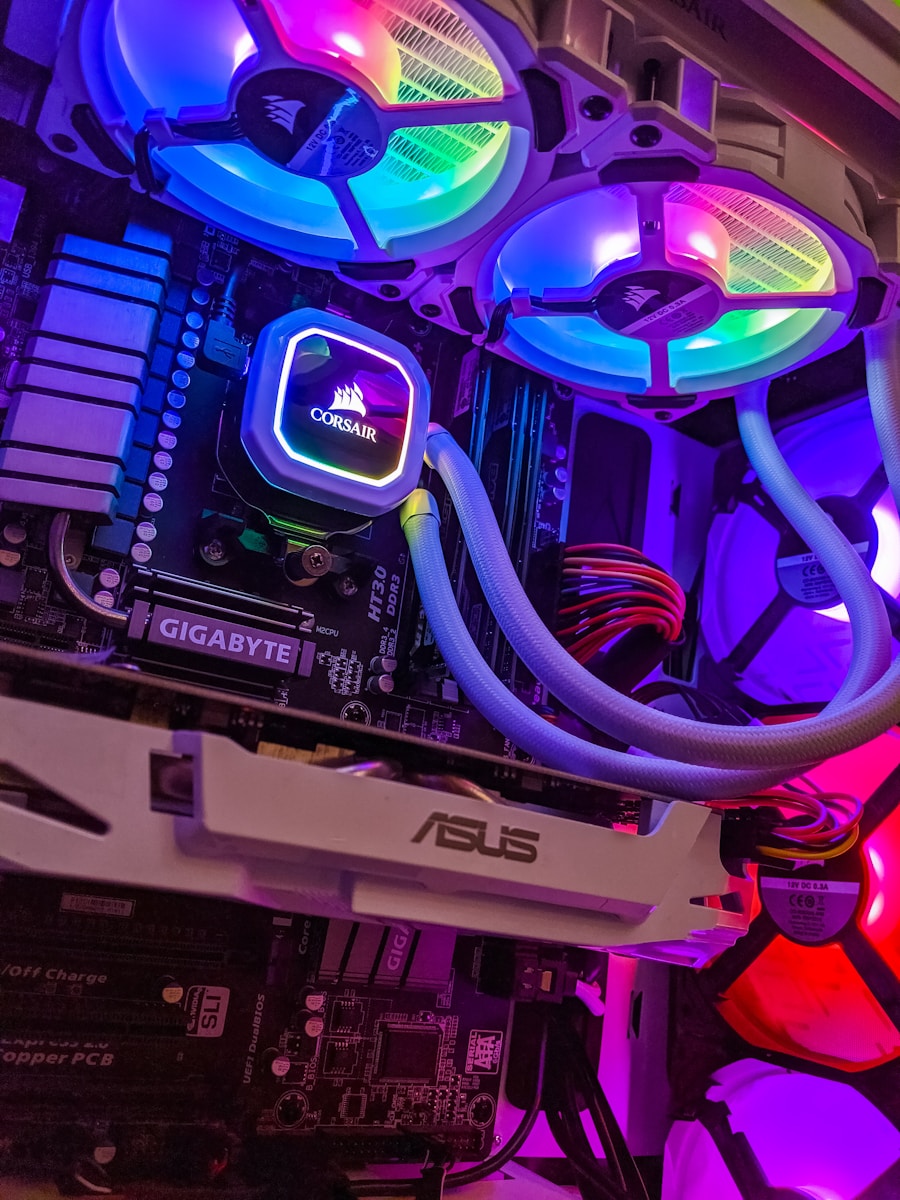Mapex Tornado 5pc Drum Set
With my recent move to an extraordinary commercial recording space, I was finally able to start recording acoustic drums (without the neighbours complaining). Before purchasing my Mapex Tornado, I was recording drums using my MIDI/USB keyboard controller. I couldn’t stand the limitations anymore, so that’s why I decided to purchase what I found to be the best acoustic drum kit for home recording.
4.5
The Avantone CR-14 is probably one of the most UNDERATED ribbon microphones.
It’s also one of the most AFFORDABLE ribbon microphones and sounds better than some of the most expensive ribbon microphones on the market. Does that sound unbelievable?
Well, hopefully the rest of this Avantone CR-14 review should convince you.
I’ll be talking about what I like/don’t like about the CR-14 and we’ll be comparing it with some other ribbons mics.
The only thing I will say is that the Avantone CR-14 isn’t the best “all-around” ribbon microphone. Rather, it’s more of a specialized instrument and I’ll be recommending it for some pretty specific applications.
The only way to find out more is to keep reading…
- What I like about the Avantone CR-14
- What I don’t like about the Avantone CR-14
- Avantone CR-14 vs Cascade Fat Head
- Avantone CR-14 vs Royer R-10
- What should I record with the Avantone CR-14?
- How can I make the Avantone CR-14 sound even better?
- Avantone CR-14: Frequently Asked Questions (FAQ)
- Summary: Avantone CR-14 Review
What I like about the Avantone CR-14
- The Avantone CR-14’s dual-ribbon design
- The Avantone CR-14’s modern durability
- The Avantone CR-14’s relatively low noise-floor
- The Avantone CR-14’s high-quality accessories
The Avantone CR-14’s dual-ribbon design
One of the features I like the most about the Avantone CR-14 is its dual-ribbon design.
If you’re new to the world of ribbon microphones, that’s actually pretty extraordinary. It’s rare to find ribbon microphones that leverage the potential of two ribbon elements.
After searching, the only other microphone I found that utilized two ribbons was the Cascade DR-2.
So, what advantage does this dual-ribbon technology really provide?
It’s simple… It compensates for the fact that ribbon microphones are generally NOT very sensitive. They usually fall somewhere between dynamic (moving-coil) microphones and condenser microphones.
The dual-ribbon design makes the scale tip more towards condenser microphones in regards to sensitivity.
That being said, whether or not you’ll benefit from this depends on your intended use.
The Avantone CR-14 will be much better suited for micing at a distance.
However, it’ll still work great in close-micing situations. Just be aware that it will pickup more ambient noise than ribbon microphones with single-ribbon elements.
The Avantone CR-14’s modern durability
Another great feature of the Avantone CR-14 is the fact that it’s much more durable.
Traditional ribbon microphones are VERY fragile, but the CR-14 is made to last. However, the ribbon elements are still fragile so it’s always best practice to avoid exposing your microphone to large gusts of air.
The high-quality metal grille should provide ample protection, but I still recommend using a pop-filter.
The brass body is also incredibly durable and not something I’d expect from such an affordable ribbon microphone.
Lastly, traditional ribbon microphones can’t usually handle high SPLs. The Avantone CR-14 provides yet another upgrade to the conventional design with an astounding 145 dB of SPL tolerance.
It sounds and looks vintage, but it meets the standards of the contemporary age!
The Avantone CR-14’s relatively low noise-floor
The one issue that’s plagued ribbon microphones for DECADES is the high noise-floor.
That’s why traditional ribbon microphone (and even modern ones) required high-quality preamps OR an inline microphone preamp (which we’ll talk about later).
That being said, the Avantone CR-14 has an amazingly LOW noise-floor for a passive ribbon microphone.
It comes in at 17 dB to be more precise. That’s only 4 dB higher than the esteemed Sennheiser MKH 416!
To put things into context… I just compared a microphone that costs less than 300$ with a microphone that costs more than 1000$. That’s just in case you still don’t believe the CR-14 can outperform the “big boys”.
The Avantone CR-14’s high-quality accessories
Avantone includes LOTS of goodies for such an affordable ribbon microphone.
In the world of ribbon microphones, these accessories are pretty much essential so MUCH appreciated…
- Shock-Mount
- Wooden Case
- Metal Road Case
Since the Avantone CR-14 is more sensitive than most ribbon microphone, the suspensed shock-mount/cradle definitely helps to keep the signal clean.
The padded wooden case itself is perfect to store and protect your investment, but in case that’s not enough…
Avantone also includes a military-grade metal road case to store the entire bundle.
The only things you’ll need to purchase separately are…
- Microphone Stand
- Pop-Filter
- XLR Cable
- Inline Microphone Preamp
We’ll talk more about the inline microphone preamp later, but it’s something you could definitely use!
What I don’t like about the Avantone CR-14
The Avantone CR-14’s unbalanced front/rear axis
Personally, I actually prefer my bi-directional microphones to be assymetrical.
In layman’s terms, that means that the front end picks up more sound than the rear end.
What I don’t like, however, is that Avantone doesn’t make this very clear in the product description.
For example, if you wanted to use the Avantone CR-14 to record two vocalists (one on each side) at the same time, it wouldn’t be the best choice. That’s already one sign that this microphone isn’t optimized for vocal use.
So, that’s why I put it under the “don’t like” section, but why do I like this?
If you want to have LESS room/ambient sound in your recordings, you’re better off with unbalanced front/rear axis.
The Avantone CR-14’s smaller ribbon elements
Once again, I’m just bringing this up to provide some contrast in my review.
I personally prefer the result of using smaller ribbon elements.
However, Avantone doesn’t make it super clear that the Avantone CR-14 is one of the DARKER ribbon microphones on the market which pretty much disqualifies it for vocal use (in my opinion).
That being said, the CR-14 will sound AMAZING on…
- Acoustic Guitar
- Electric Guitar
That’s why I LOVE this ribbon microphone.
It’ll also sound great on cymbals and brass instruments if your goal is to tame high-frequencies.
The smaller ribbon elements (5mm x 35mm) results in a more pronounced high-frequency roll-off. It’s common with ALL ribbon microphones, but it’s more emphasizes with the Avantone CR-14.
That’s why I say that this ribbon microphone isn’t the best “all-arounder”.
If you’re looking for something with more top-end (better for vocals), I suggest looking at the sE Electronics X1R.
Avantone CR-14 vs Cascade Fat Head
The Cascade Fat Head is another affordable ribbon microphone that is often compared to the Avantone CR-14. I still prefer the CR-14, but here’s a table to give you a better idea of the differences…
| Avantone CR-14 | Cascade Fat Head | |
| Polar Pattern | Bi-Directional | Bi-Directional |
| Ribbon Element | 2x 2 Micron Aluminum | 1x 2.5 Micron Aluminum |
| Frequency Response | 30 Hz – 15 kHz | 25 Hz – 16 kHz |
| Maximum SPL | 145 dB | 135 dB |
| Balanced Read/Front Axis | No | Yes |
| Included Accessories | Shock-Mount, Wooden Case, Metal Road Case | Microphone Clip, Carrying Case, Flight Case |
If you were looking for something brighter though, the Cascade Fat Head would definitely fit the bill.
However, I would personally recommend the sE Electronics X1R instead.
It is worth noting that the Fat Head is less expensive than the Avantone CR-14.
The symmetrical figure-of-eight patter also makes it ideal for vocal duets and mid-side recording.
Avantone CR-14 vs Royer R-10
The Royer R-10 is probably one of the best affordable ribbon microphones from Royer, so I thought I’d compare it to the Avantone CR-14.
It’s still more than double the price, but I still personally prefer the CR-14.
Here’s a table that illustrates some of the key differences…
| Avantone CR-14 | Royer R-10 | |
| Polar Pattern | Bi-Directional | Bi-Directional |
| Ribbon Element | 2x 2 Micron (Aluminum) | 1x 2.5 Micron Aluminum |
| Frequency Response | 30 Hz – 15 kHz | 30 Hz – 15 kHz |
| Maximum SPL | 145 dB | 135 dB |
| Balanced Read/Front Axis | No | Yes |
| Included Accessories | Shock-Mount, Wooden Case, Metal Road Case | Microphone Holder, Dust Cover, Carrying Case |
Besides the fact that the Avantone CR-14 is more sensitive, these two ribbon microphones sound relatively similar. They’re both dark and can handle high SPLs.
I also think you’re getting much more value with the CR-14 bundle.
What should I record with the Avantone CR-14?
The one thing I DON’T recommend the Avantone CR-14 for is vocals, especially female vocals.
That’s because it rolls-off at approximately 15 kHz.
As we discussed in previous sections, the Avantone CR-14 is one of the darker ribbon microphones on the market so it won’t provide that high-end “sparkle”.
That being said, I think it’s PERFECT for instruments that typically get cut after 10 kHz…
- Acoustic Guitar
- Electric Guitar
- Bass Guitar
It’s always better to use a microphone that has the EQ curve you’re looking for rather than EQing in post.
I won’t explain why in this article, so just take my word for it now.
That’s proabably why the Avantone CR-14 sounds AMAZING on stringed instruments.
I wouldn’t personally use it on bass guitar on its own, but it could definitely add some punch to your mix!
How can I make the Avantone CR-14 sound even better?
Okay, so I’ve mentioned “inline microphone preamps” a few times already.
If you’re using dynamic (moving-coil and/or ribbon) microphones that are PASSIVE, you’ll definitely benefit from using an inline microphone preamp.
Instead of spending THOUSANDS on an amplifier to accomodate your new ribbon microphone…
You can purchase one of these portable devices to enhance your signal:
Basically, an inline microphone preamp BOOSTS your signal without increasing the noise-floor.
We refer to this as “clean gain”. Boosting the gain on your audio interface WILL increase the noise-floor and trust me, you’ll have to set the gain pretty high to accomodate a passive ribbon microphone.
Inline microphone preamps also improve the frequency response and dynamic range.
It kind of makes your microphone come to life!
Can the Avantone CR-14 benefit from an inline microphone preamp? ABSOLUTELY!!
I personally recommend the TritonAudio FetHead, but they’re essentially the same.
Avantone CR-14: Frequently Asked Questions (FAQ)
If you have any questions about the Avantone CR-14, feel free to ask them in the comment section.
However, maybe your question has already been answered over here…
Is the Avantone CR-14 active or passive?
The Avantone CR-14 is a PASSIVE ribbon microphone
Does the Avantone CR-14 require phantom power?
NO. Introducing phatom power into your Avantone CR-14 will damage it.
Summary: Avantone CR-14 Review
Do you finally believe me? I guess you’ll have to hear it for yourself to confirm what we discussed!
I was serious about the Avantone CR-14 being one of the most underated microphones. Sometimes I’m afraid that they’ll discontinue it because I’m having difficulty finding them in Canada nowadays.
However, they’re still very much available in the US!
Considering what you’re getting in the box, I guarantee that the Avantone CR-14 is your best introduction to the world of ribbon microphones. It sounds authentically dark!
If you want something brighter, what you’re really looking for is a condenser microphone.
And remember, don’t forget to upgrade your new microphone with an inline microphone preamp!
So, what do you think about the Avantone CR-14? Let us know in the comments and don’t be shy, feel free to ask me any questions you may have about the wonderful world of ribbon microphones.
I hope you enjoyed this product review, now it’s time to get back to work… Thanks for reading!
Sources:
http://www.avantonepro.com/cr-14.php
https://www.cascademicrophones.com/ribbon-microphone-fat-head








